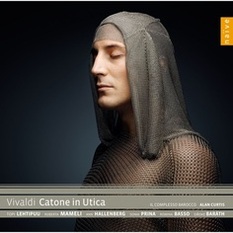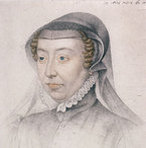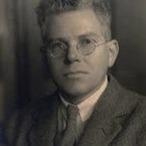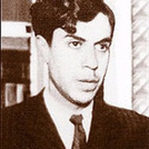|
The release of Catone in Utica marks the midway point in Naïve’s 25 year project: the Vivaldi Edition series. Ann Hallenberg, Sonia Prina, and other stars of the Baroque music world have been assembled under the baton of Alan Curtis, accompanied by Il Complesso Barocco.  Catone in Utica Catone in Utica Following on from the successes of La fida ninfa, Bajazet and Adelaide, Vivaldi produced this stunning opera as the finale to his time at the Teatro dell’Accademia Filarmonica. He assembled a diverse cast including a local tenor, Cesare Grandi, as Catone, the soprano castrato Giacomo Zaghini as Cesare, and Anna Girò, one of his most faithful collaborators, as Marzia. The result was a stunning opera of which Prince Charles Albert wrote that “Everything gave undiminished delight.” Only acts two and three ofCatone in Utica survive in the archives of the Biblioteca Nationale in Turin. For this recording, Alan Curtus and Alessandro Ciccolini have painstakingly reconstructed act one. The star of the CD must surely be Swedish mezzo-soprano Ann Hallenberg. Her portrayal of the fiendish role of Emilia is outstanding, both vocally and with respect to characterisation. Hallenberg’s rendition of "O nel sen di qualche stella" is a masterclass in the art of singing. Hallenberg’s rich mezzo blossoms at the top of her range, with never a hint of shrillness, while the low register is full and warm. Listen out for the stunning multiple Bb3’s (Baroque Pitch) in the A section. Her thirst for vengeance in the B section is chilling, and the virtuosity of the extended staccato ornamentation on the word “tiranno” is without parallel. "Come invano il mare irato" sees Hallenberg sail through over two octaves of Vivaldi’s glorious music, from G3 to B5. The unbelievable virtuosity of the endless runs in the da capo, and the magnificent A Capella C6 in the cadenza, are just two of the many highlights of the aria. Hallenberg utterly dominates the music, showing no fear while being totally immersed in the music. It is clear from this recording that she is one of the finest singers on the world stage today. Roberta Mameli’s Cesare is something of a revelation. In “Vaga sei nè sdegni tuoi” Mameli relishes the relentless pace of Vivaldi’s tempestuous aria. Her repeated notes in the da capo are perfectly executed: a truly unbelievable performance. In "Se in campo armato", Cesare throws down the gauntlet to Catone in this coloratura-laden aria. Mameli interpolates some exciting staccato ornamentation in da capo.
Another side of Cesare’s character is seen in "Apri le luci e mira." Mameli’s pure lyric soprano weaves a hunting and hypnotic spell in this devastating expression of Cesare’s love. The B section contains some voluptuous vocal writing by Vivaldi, particularly on the extended phrases on the word “fiamma.” "Se mai senti spirarti sul volto lieve" is a much lighter expression of love, and one which, particularly in the A section, presages Mozart. Mameli’s phrasing in this aria is utterly sublime. The rest of the assembled cast produced some very strong singing. Topi Lehtipuu’s Catone is both energetic and engaging, while Sonia Prina’s Marzia is a delight: full of warmth in the chest register, and desplaying her trademark lightning coloratura in "Se parto, se resto". Romina Basso’s Fulvio was full of fury in "L'ira mia, bella sdegnata", bringing tangible vitriol to the aria, while Emőke Baráth’s Arbace was highly emotional and full of anguish. The accompaniment from Il Complesso Barocco was outstanding, with some surprisingly fierce direction from Alan Curtis.
0 Comments
As part of their ambitious project, the Vivaldi Edition, Naïve have released a second compilation of operatic arias, showcasing the work of the “Red Priest”.  Vivaldi Operas vol. 2 Vivaldi Operas vol. 2 All of the arias are taken from the “Turin treasure,” the collection of 22 operas and around 50 arias preserved in the archives of the National Library of Turin. The arias incorporated into this compilation move throughout the whole spectrum of emotional expression, from fierce tempests to the tenderest expressions of love. The credits list runs like a “who’s Who” of Baroque music, with performers such as Philippe Jaroussky, Nathalie Stutzmann, Sandrine Piau and Jean-Christophe Spinosi. The collection begins with the fierce “Se lento ancora il fulmine” from Argippo, which was re-discovered relatively recently by Czech harpsichordist and conductor Ondrej Macek in Regensburg. The Italian mezzo-contralto Romina Basso gives an utterly astonishing performance, with her warm voice darkening wildly to infuse the aria with terrible rage. Sandrine Piau is equally formidable in “Alma oppressa da sorte crudele” from La fida ninfa. The music is very similar to the fiendish “Dominus a Dextris Tuis”, a Tenor aria from Dixit Dominus, RV 807, and gives the singer very little time to breathe. This poses no problems for Piau, whose explosive coloratura cuts through the music like a knife. Particularly stunning is her ornamentation in the da capo, with a string of staccato leaps to C6 (A=415). Jean-Christophe Spinosi’s direction is vigorous, and his decision to highlight the bass pedal with a strong crescendo is highly dramatic. More fireworks from Russian soprano Julia Lezhneva as she sings “Gelosia” from Ottone in villa. Lezhneva’s rich, plumy soprano moves effortlessly thought the relentless coloratura of the A-section, while tenderly caressing Vivaldi’s beautiful and tragic phrases in the B-section. The 1714 edition ofOrlando furioso has a version of “Nel profondo cieco mondo” for baritone, which is admirably performed by Riccardo Novaro. The music is the most “Handelian” I have heard from Vivaldi. “Alme perfide isegnatemi” from Atenaide provides some punishing writing for the tenor voice, which Stefano Ferrari navigates with immense skill. Mention must also be made of the beautiful pizzicato string playing from Modo Antiquo under the direction of Federico Maria Sardelli in “Cor moi che prigion sei”. The most ethereal aria on the album is the delicious “Sol da te” from Orlando Furioso. Philippe Jaroussky and Jean-Christophe Spinosi join forces to produce a truly mesmerising performance. Jaroussky is on top form here, producing that clear, tense yet floating tone for which he is famous. His “duet” with the flute is both measured and intense. Finnish tenor Topi Lehtipuu shines in the lament “Deh ti piega” from La Fida Ninfa. He spins line after line of sensuous legato, moving effortlessly through the registers, producing a whole gamut of rich vocal coloration. The most interesting combination of tone comes in the duet “Che amaro tormento” fromTeuzzone. Here, contralto Delphine Galou and sopranist Paolo Lopez sing their love duet, and it is fascinating hear the high and bright timbre of Lopez interact with Galou’s dark contralto.
This second volume is a fantastic showcase for almost 25 years’ worth of research, recording and rediscovery by Naïve records of Vivaldi’s work. With so many gems here, this is a must-have for any Baroque collector, and a wonderful introduction for anyone looking to dive into the Baroque and Vivaldi for the first time. |
Archives
October 2014
Categories
All
|
MOST VIEWED POSTS
© James Edward Hughes 2013
 RSS Feed
RSS Feed





